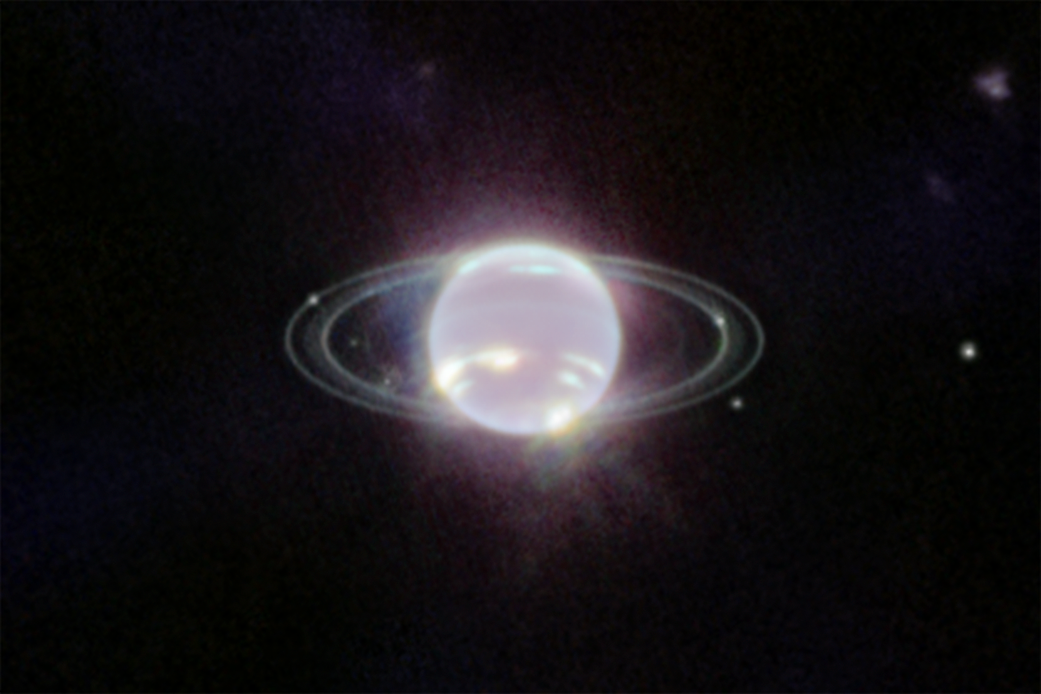海王星在近红外线中炫耀它的行星环
On Sept. 21, 2022, the James Webb Space Telescope delivered the clearest view of Neptune’s rings in more than 30 years. Webb’s Near-Infrared Camera (NIRCam) captured several bright, narrow rings as well as the planet’s fainter dust bands. Voyager 2 was the last to detect some of these rings during its flyby in 1989, but this is the first time we have an infrared image of them.
Since NIRCam images objects in the near-infrared range from 0.6 to 5 microns, Neptune does not appear blue to Webb. In fact, the methane gas so strongly absorbs red and infrared light that the planet is quite dark at these near-infrared wavelengths, except where high-altitude clouds are present. Those methane-ice clouds are prominent as bright streaks and spots, which reflect sunlight before it is absorbed by methane gas.
Image Credit: NASA, ESA, CSA, STScI
2022年9月21日,詹姆斯·韦伯太空望远镜提供了30多年来海王星环最清晰的图像。韦伯的近红外相机(NIRCam)捕捉到了几个明亮、狭窄的行星环以及行星上较暗的尘埃带。旅行者2号是1989年飞越时最后一次探测到这些光环,但这是我们第一次获得它们的红外图像。
由于NIRCam拍摄到的物体在0.6到5微米的近红外范围内,因此海王星在韦伯看来并不呈蓝色。事实上,甲烷气体对红光和红外光的吸收非常强,所以除了高空云层存在的地方,行星在这些近红外波长处非常暗。这些甲烷冰云以明亮的条纹和斑点的形式突出,它们在阳光被甲烷气体吸收之前反射阳光。
从太空望远镜科学研究所下载全分辨率、未压缩版本和支持视觉效果。
图片来源:NASA、ESA、CSA、STScI

